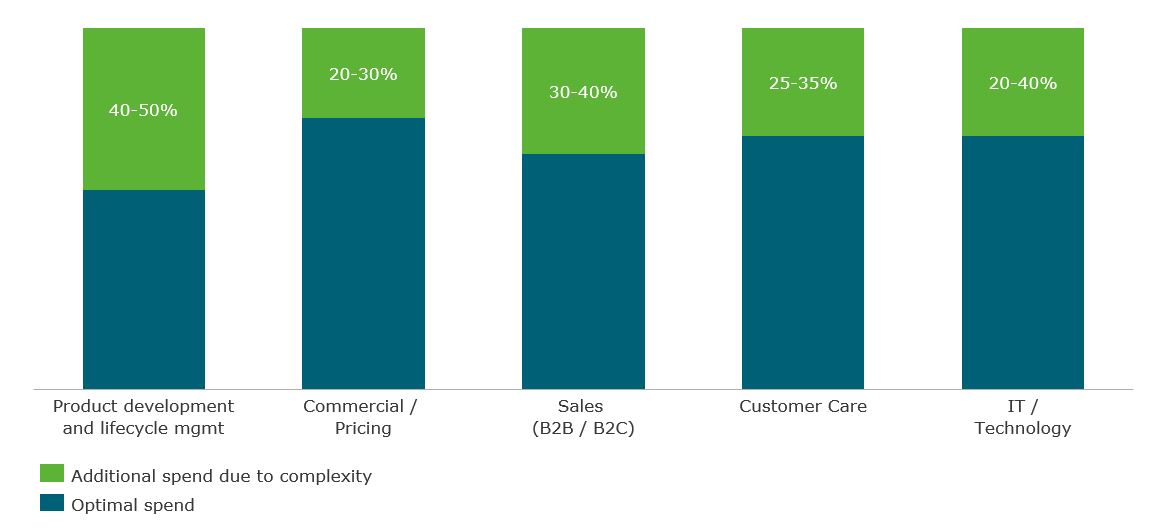As the Telco product portfolio becomes more complex, it has a knock-on effect across the business. This especially impacts the quality and cost of customer interactions, efficiency in developing, managing and marketing products, as well as inflating the cost of back end operations. Telcos looking to become leaner and more digital, need to first start with the challenging, but rewarding undertaking of radically simplifying their product portfolios.
Over a series of articles, I will explore:
1. The cost and implications of complexity
2. Benefits from portfolio simplification
3. Lessons learned from helping our clients drive simplification in their businesses.
The cost and implications of complexity
Complexity drives significant cost across the business. We see the impact very clearly in the sales and service channels, where customer transaction times are taking much longer than they should. Sales and service agents have to navigate a range of tariffs and promos to offer the best option to the customer or to help with their service issue. Complexity also makes it more challenging to automate / digitise parts of the customer interaction. More complex portfolios result in longer activation / provisioning time and increased billing errors, all adversely impacting their Net Promoter Scores.
Beyond the obvious impact on customer interactions, complexity also makes it difficult for Telcos to be more nimble in the market place. The sheer volume of business rules, tariffs, service components, all interlinked, increases the amount of time and effort to develop, manage and market the product portfolio. In addition, this complexity results in increased IT costs and a more complex IT landscape, from increased license and infrastructure costs, to the need to retain legacy systems to support old tariffs.
In summary, the cost of complexity is high with implications across the business. This needs to be addressed as a first step when transforming into a leaner more digital Telco.
Implications of complexity:

Cost of complexity:


